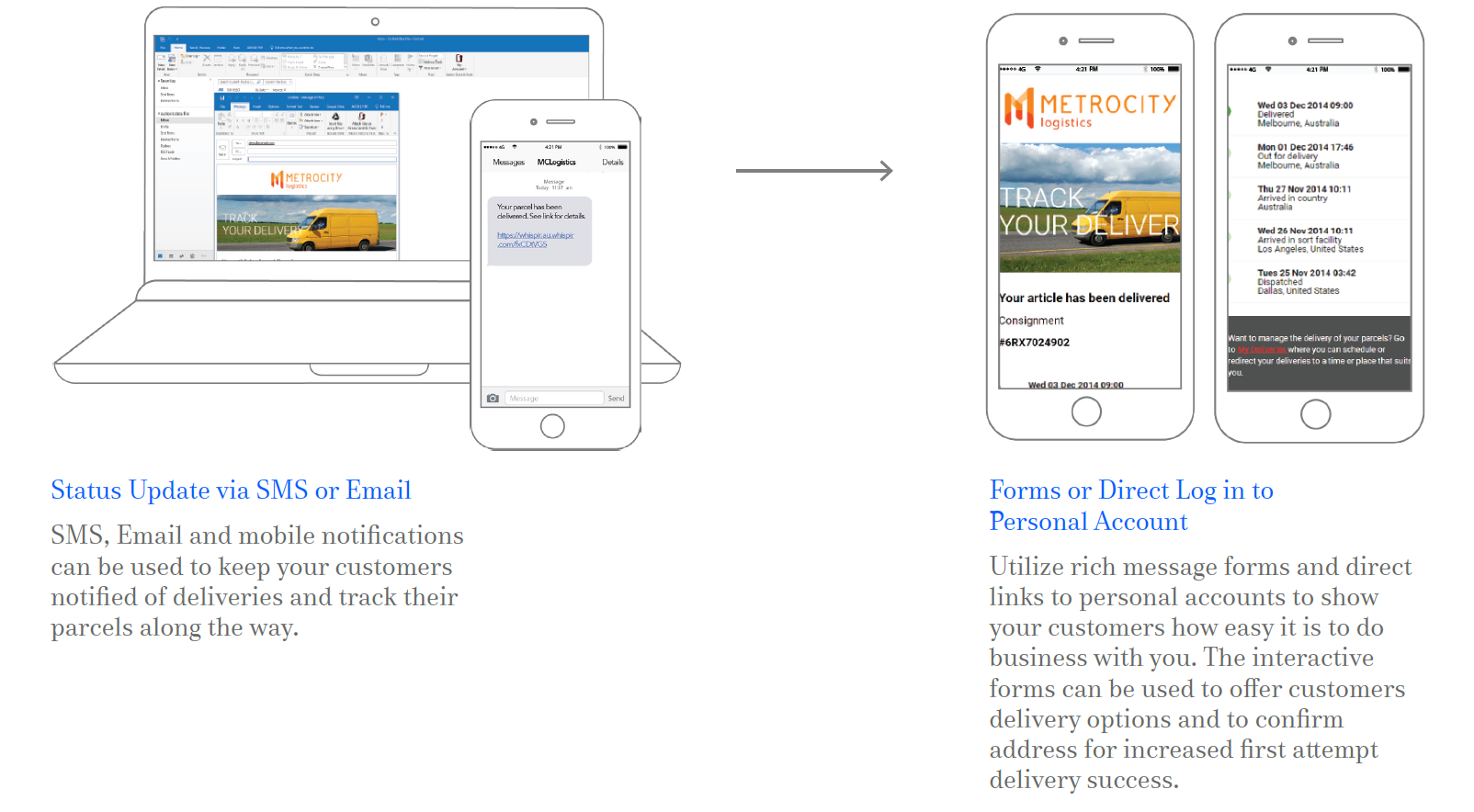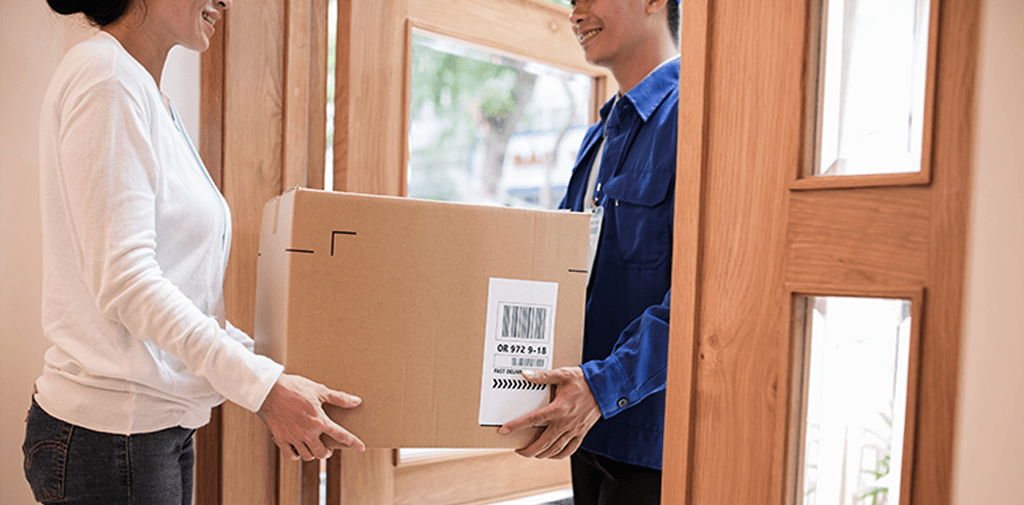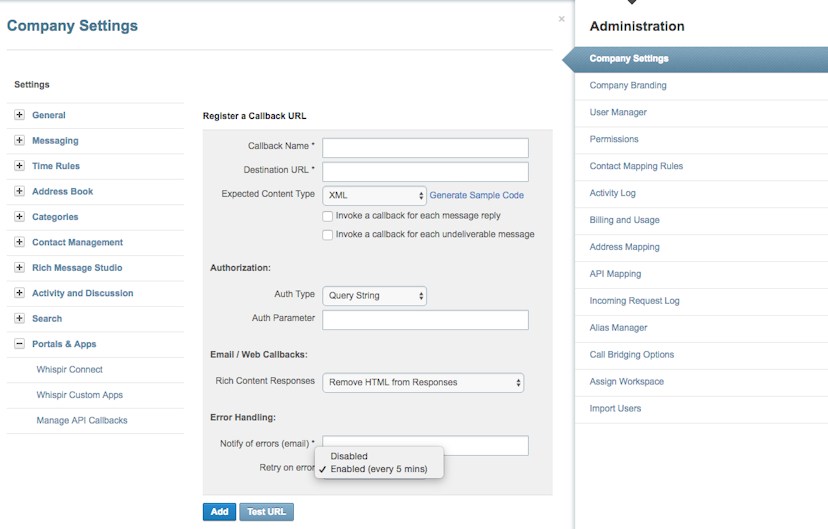The rise of e-commerce has caused the parcel delivery sector to boom in recent years, with lots of new courier businesses entering the market and looking to get in on the action.
With so many rival courier businesses now competing in a market expected to be worth $326.32 billion by 2025, new entrants and established players alike are turning to technology to drive efficiencies and grow their customer revenue.
Many of these businesses face a range of similar challenges, including:
Customer notifications for first-time delivery.
The biggest challenge all logistics and courier businesses face is ensuring their deliveries make it to their intended destination on the first time attempt, as follow-up deliveries are a huge drain on resources.
With that in mind, most companies have some sort of delivery notification system in place, yet many are limited or don’t provide customers with the information they crave or may receive from other providers. Not being kept informed of delivery times or being unable to change the time/location of a delivery can have a negative impact on the customer experience.
To combat this issue, businesses can leverage advanced notification systems that provide real-time updates to customers. These systems can send alerts via SMS, email, or app notifications, informing customers of the estimated delivery time and allowing them to reschedule or redirect the delivery if necessary.
Additionally, incorporating interactive voice response (IVR) systems can further enhance communication by providing a direct line for customers to request changes or inquire about their delivery status.
Driver coordination
Effective driver coordination is another significant challenge for logistics and courier businesses.
Managing a fleet of drivers involves dealing with various factors such as road closures, parking difficulties and vehicle breakdowns, all of which can disrupt schedules and delay deliveries, negatively impacting customer satisfaction.
To address these challenges, businesses can use advanced communication platforms that enable dispatchers to send real-time updates and instructions to drivers, helping them navigate traffic conditions and locate delivery points more efficiently.
By facilitating instant communication between drivers and dispatchers, any issues that arise on the road can be addressed promptly, ensuring smoother operations and timely deliveries.
Inefficient Administration
Managing and keeping track of delivery documentation is an issue for many logistics companies.
Many businesses still maintain manual recordkeeping systems in logbooks or files, which leads to several inefficiencies. This outdated approach results in poor coordination of dispatch and collections, as well as weak audit trails for deliveries.
Manual systems are prone to human error, which can cause discrepancies in records and make it challenging to track the status of deliveries accurately. This lack of accuracy can lead to delays, misplaced packages, and a lack of accountability, ultimately affecting customer satisfaction and trust.
Transitioning to digital communication solutions can significantly alleviate these issues. Utilizing SMS, email, and voice notifications can streamline administrative processes and enhance overall efficiency.
These communication tools allow for real-time updates and instant sharing of delivery information across different departments.
Customer Engagement in Action
Now you’re across the challenges facing transport and logistics providers, here are some of the ways that communications technology can help address these challenges and allow courier businesses to stay competitive:
Smart Engagement Communications Technology
Smart Engagement communications technology is used by courier businesses to streamline delivery efficiencies and improve the customer experience with several key features – starting with SMS backed communication, allowing timely parcel delivery alerts to be sent to customers.
This SMS alert either ensures the recipient is at home or alternatively via a Rich Message the recipient can select a new time for delivery or pick up.
The system can also be integrated with billing, allowing payment transaction notifications to be automated, and has the potential for further integration with marketing platforms to provide contextually relevant offers that add value to both customer and business.
This easy-to-implement mechanism has been demonstrated to improve first-attempt deliveries by close to 40% with the additional benefit of improved customer satisfaction.
Keen to hear more about this solution? Get in touch with us today by clicking here!












